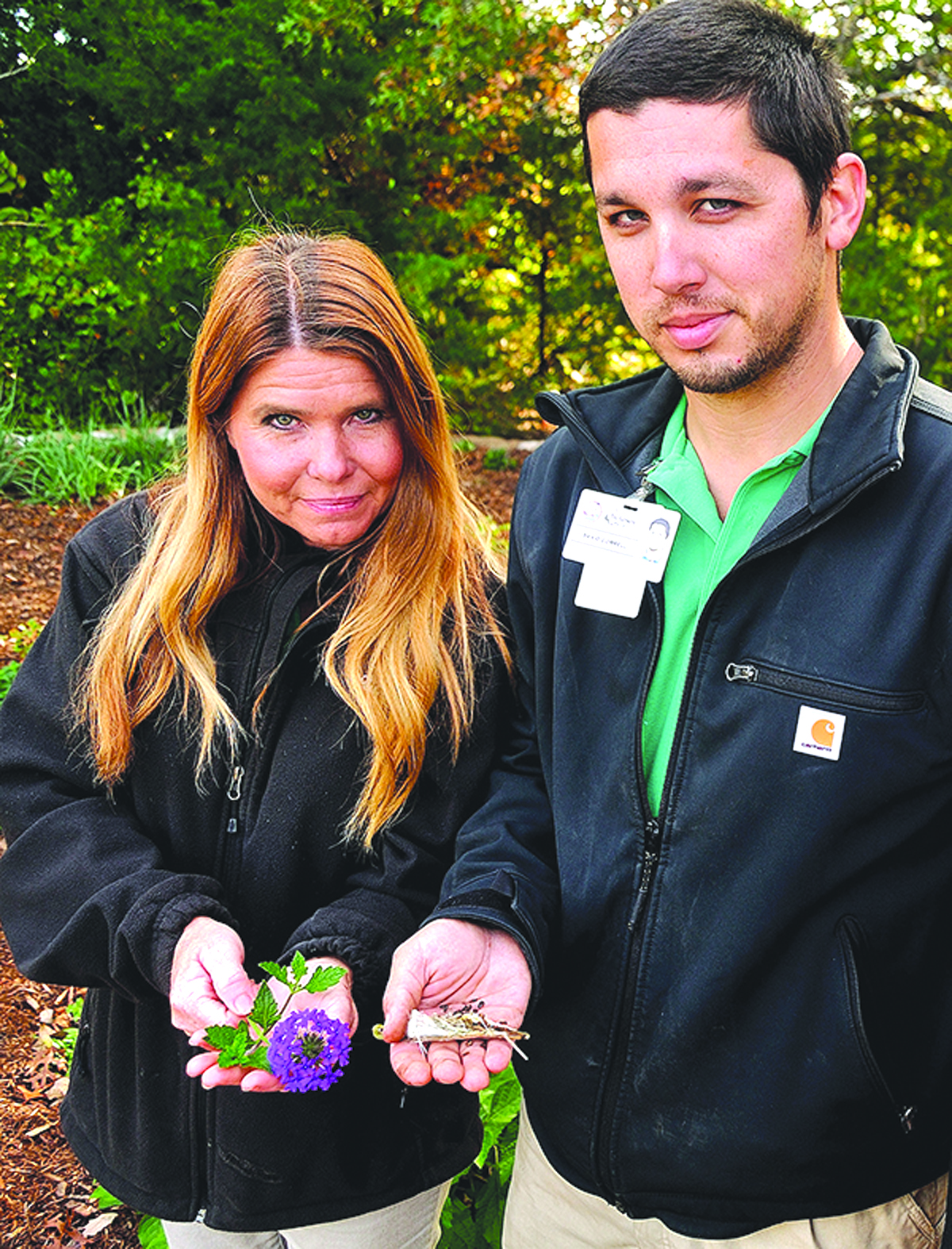Environmental stewardship; Chickasaw project supports monarch butterfly resurgence
CONTRIBUTED BY Gene Lehmann, Media Relations., Media Relations.
This article appeared in the January 2016 edition of the Chickasaw Times
SULPHUR, Okla. – The Chickasaw Nation is giving the monarch butterfly a helping hand. Like bees and fireflies, the monarch needs all the TLC it can get.
The monarch’s population is plummeting. People are altering the butterfly’s habitat, building new structures, and eliminating life-giving milkweed plants from pastureland. A decade ago, 20 billion Monarch butterflies existed. That number is now two billion.
Rhonda Sellers steps lightly in a well-mulched 45’x65’ garden plot at the Chickasaw Cultural Center in Sulphur. The Chickasaw Nation ecosystem expert – her official title is Ecological Resource Coordinator – speaks about the genus of plants that will help the monarch population rebound.
The plants are many and have various scientific names. At the Cultural Center plot, there are plenty of milkweed and nectar-rich plants to sustain a few thousand monarchs and their offspring.
“Butterfly milkweed is located at three separate locations on campus,” Ms. Sellers said as she stooped to show the seed pod of the plant.
She knows it well. She has harvested 55,000 seeds. The Chickasaw Nation intends to keep 5,000 for reseeding this spring. The other 50,000 are going to Cedar Valley Nurseries, a large greenhouse operation east of Ada. Cedar Valley is partnering with the tribe to get those 50,000 plants into the hands of citizens who can lend the struggling monarch a hand.
Only plants in the milkweed family can sustain the butterfly. It is where a single female may lay up to 1,000 eggs. The eggs become larvae, then caterpillars, and then the orange and black beauty that graces the sky and glides effortlessly on the wind, the Nation’s Greenhouse Supervisor David Correll explains.
With more than 100 flower beds at the Cultural Center, Ms. Sellers estimates more than half contain “butterfly friendly” plants. That number will grow by next spring and stretch as far south as Thackerville.
“The good thing is we are not just helping monarchs, we’re helping all pollinators, especially the honey bee,” Chickasaw Nation Greenhouse Supervisor David Correll said. “The honey bee loves all of these plants as much as the monarch.”
The tribe plans to expand the plot of ground beyond its present borders, stretching it along a shaded tree line about 15 additional yards. Additionally, a bed of monarch-friendly plants is planned along the hillside adjacent to the trail leading into the Cultural Center’s Traditional Village.
“I am going to attempt to incorporate some plum growth in that area as well,” Ms. Sellers said.
So dedicated are Chickasaws to seeing the project succeed, workers are harvesting native plants and bringing them to the Cultural Center.
Ms. Sellers shows off a three-foot tall Bushy Bluestem plant she harvested “by the side of the road near my house. It is difficult to find some of these plants in greenhouses,” she said.
Native grasses are high on Ms. Sellers’ list of needed items. She isn’t shy about walking through fields to harvest the plants she can’t find at local nurseries.
Likewise for Mr. Correll.
“This place is an unqualified success story just six months out,” he said. “There are plants here, and in the Honor Garden. I counted about 50 monarch butterfly caterpillars in the small plot and in the Honor Garden. By next year, I will be excited to discover just how much of a difference we are making.”
Working in tandem with Monarch Watch, a University of Kansas project, the tribe is dedicated to providing the resources to see the creature flourish.
Other tribes are partnering in the project as well.